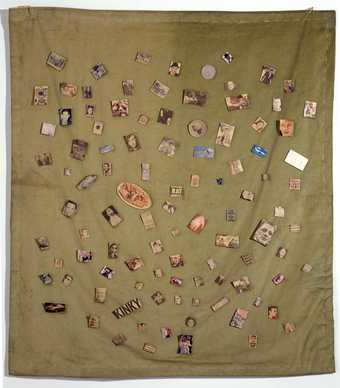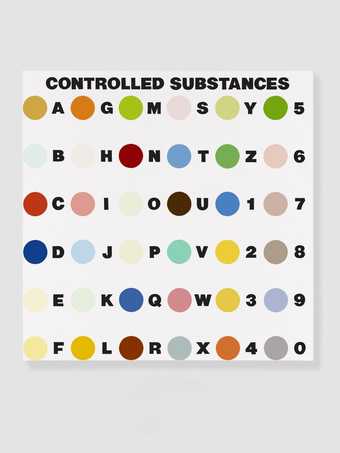
Tracey Emin, Sarah Lucas
The Last Night of the Shop 3.7.93
(1993)
Tate
Inspired by the artist led initiatives in New York in the 1960s, these spaces are often housed in temporary places – shops, warehouses, soon-to-be demolished buildings – which can be inhabited for free or for a nominal rent for a short period of time.
The artist-curator tends to remain outside the commercial art world, and within a community of artists – often ones with whom they studied, or of a similar generation – who are frustrated by the perceived impenetrability of the art world.
For some artist-curators, it is the freedom to create art, control its output and have a say in how it is exhibited that appeals, for others it is a means of survival, a way of gaining exposure for the art that they and others do.

Damien Hirst
Controlled Substance Key Painting
(1994)
ARTIST ROOMS Tate and National Galleries of Scotland
In the 1990s the art scene in London was re-energised by artist-run exhibitions and galleries. Taking advantage of the cheap empty shops, offices and warehouses which the collapse of the stocks and property market in 1987 had made readily available, young artists were able to create exhibiting opportunities for themselves outside the established gallery system.
Perhaps the best known of these initiatives was Freeze an exhibition organised by a group of young artists led by art student Damien Hirst in an empty London Port Authority building in London’s Docklands. Freeze was a phenomenal succes and was the springboard for the careers of many of the artists known as the YBAs (Young British Artists). Other significant artist-run initiatives established in London around that time include galleries City Racing and Matt’s Gallery.

